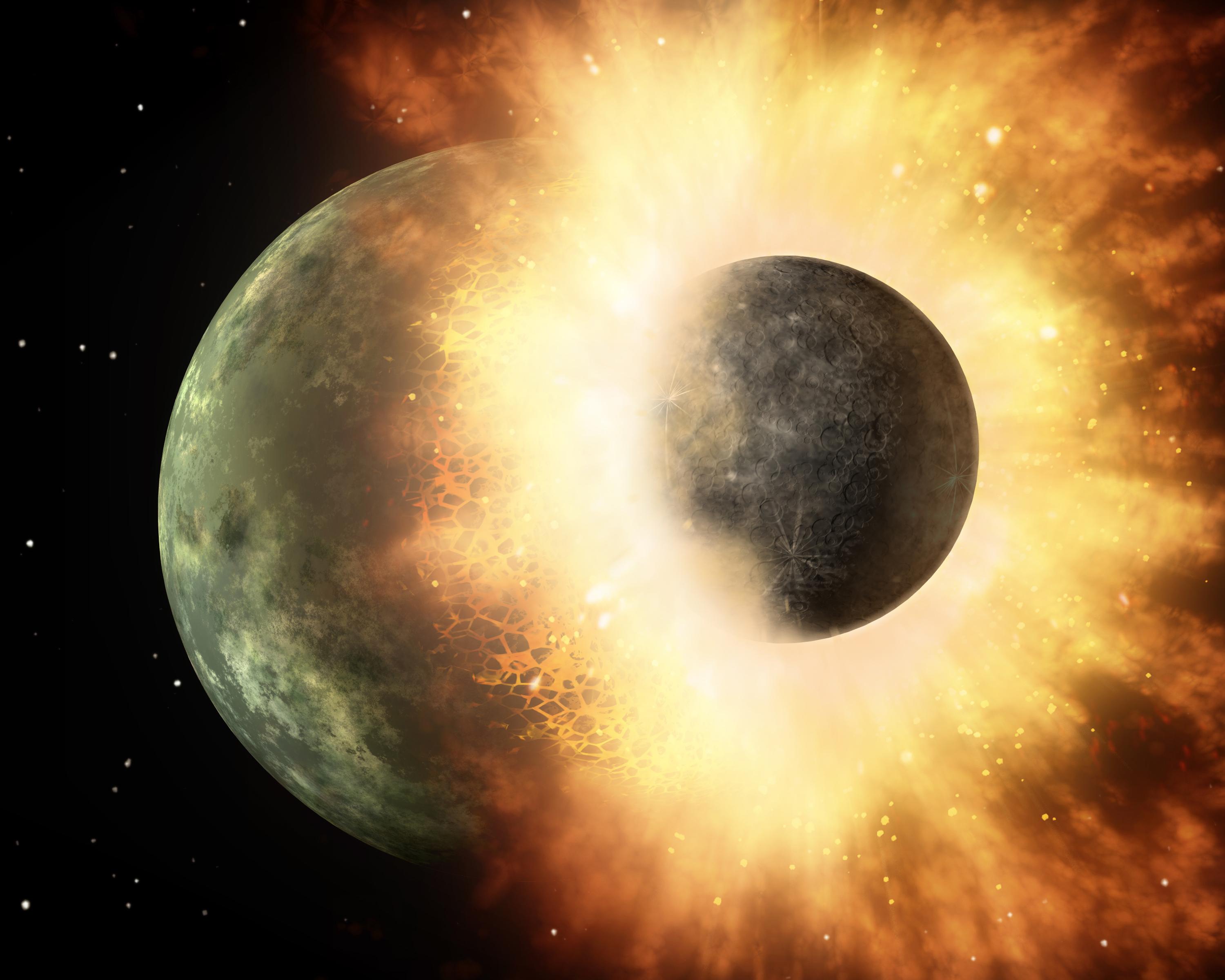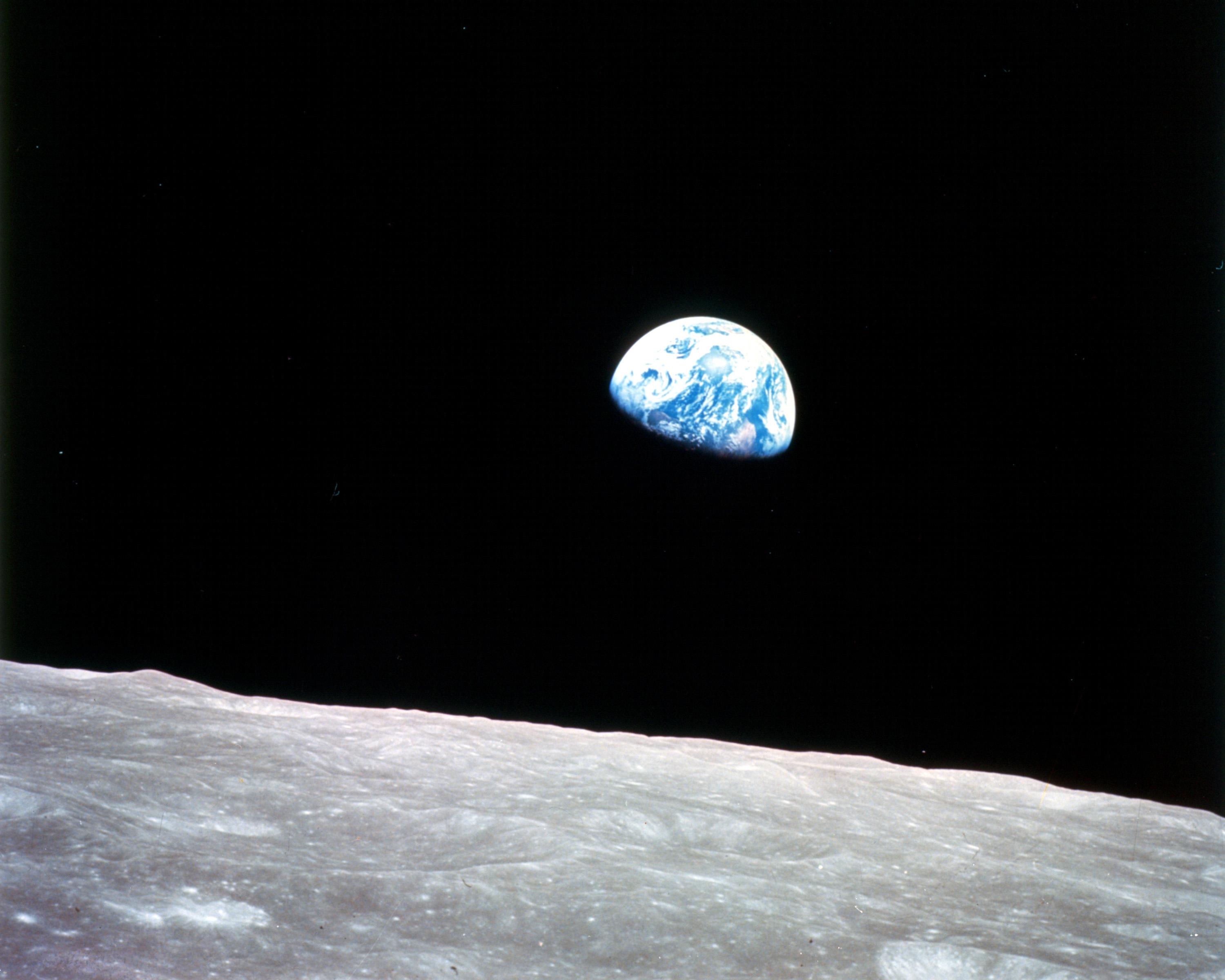A massive space rock impact may have kickstarted Earth's magnetic field
The interplanetary collision that formed the moon might have more connections to Earth's ancient history than we ever imagined.

Our planet's magnetic field is a prodigy and not a late bloomer, a new study suggests.
The protective magnetic field surrounding Earth is so strong that it must have formed early in our history, but there's a complication to timing that: Earth likely got whacked by a Mars-size protoplanet 4.5 billion years ago. That crash may be connected to how our magnetic field was formed.
"Previous theories had not recognized this potentially important connection," co-author David Hughes, an applied mathematician at the University of Leeds, said in a statement of the peer-reviewed study in PNAS, published Wednesday (Nov. 2).
The interplanetary collision was so colossal that it created gobs of material that formed Earth's moon, according to the "giant impact hypothesis" of the moon's origin story. Scientists have been studying isotopes (types of elements), meteorites and geology for decades to constrain the moon's formation, but the magnetic field hypothesis is not as thoroughly explored.
Related: Earth's moon had a magma ocean for 200 million years
Earth generates its magnetic field through a geodynamo process, which requires a planet to rotate at a certain speed and have an interior fluid that can conduct electricity, among other properties. Earth's molten-iron outer core is where the conversion to electrical and magnetic energy takes place.
The field is self-sustaining, as the magnetic field induces electrical currents, and the currents generate a magnetic field. But how that process got started in the first place is poorly understood. In their paper, the authors say these are key questions that must be asked in future research to constrain if the strong field existed before or after the impact:
Get the Space.com Newsletter
Breaking space news, the latest updates on rocket launches, skywatching events and more!
- What are the conditions under which disk accretion leads to the formation of a strongly magnetized protoplanet?
- What kinds of impact will leave a liquid core strongly magnetized? • Conversely, what kinds of impact can lead to the strong magnetization of the liquid core?
- Can the removal of the crust and/or mantle by a giant impact create the conditions for vigorous convection in the core?
- Can the instabilities driven by rapid angular momentum loss [loss of rotational speed] lead to strong magnetization of the core?
- Can the recondensation of accretion tori [in other words, the coming together of the donut-shaped accretion disk after the impact] lead to dynamo action?

There's too little information right now to choose between the scenarios, the authors emphasize, but they add that the big crash cannot be ignored when discussing how the Earth's magnetic field formed.
The field is linked with Earth's relatively rapid rotation (24 hours), which is key to keeping the magnetism alive. The dynamo only works if it is maintained, the researchers said, and cannot restart due to physical constraints in the Earth's interior. It is unclear, however, if the impact caused the dynamo or if the Earth's rotation created a strong dynamo earlier in history — one strong enough to resist the impact. More study will be required to constrain the timing.
“It is this remarkable feature [of dynamo persistence] that allows us to make deductions about the history of the early Earth — including, possibly, how the moon was formed," lead author Fausto Cattaneo, an astrophysicist at the University of Chicago, said in the same statement.
The authors added that keeping this dynamo constraint in mind may help future researchers narrow down the timing of Earth's magnetic field coming to be, either before or after the impact. They also ask for more studies diving deep into Earth's magnetic history.
Elizabeth Howell is the co-author of "Why Am I Taller?" (ECW Press, 2022; with Canadian astronaut Dave Williams), a book about space medicine. Follow her on Twitter @howellspace. Follow us on Twitter @Spacedotcom or Facebook.
Join our Space Forums to keep talking space on the latest missions, night sky and more! And if you have a news tip, correction or comment, let us know at: community@space.com.

Elizabeth Howell (she/her), Ph.D., was a staff writer in the spaceflight channel between 2022 and 2024 specializing in Canadian space news. She was contributing writer for Space.com for 10 years from 2012 to 2024. Elizabeth's reporting includes multiple exclusives with the White House, leading world coverage about a lost-and-found space tomato on the International Space Station, witnessing five human spaceflight launches on two continents, flying parabolic, working inside a spacesuit, and participating in a simulated Mars mission. Her latest book, "Why Am I Taller?" (ECW Press, 2022) is co-written with astronaut Dave Williams.









